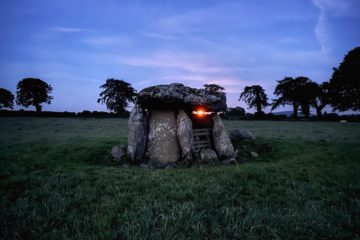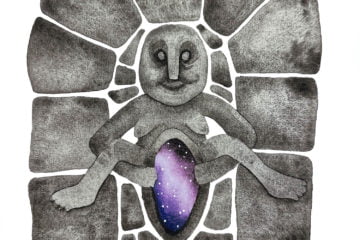
You know, for as long as I can remember I’ve always had this sort of odd bias against wedge tombs when compared to dolmens. Dolmens are my all-time favourite type of megalith, and by contrast I’d never had the same level of ‘wow’ when visiting wedge tombs. At least, not until I made the journey to the Labbacallee tomb outside Glanworth in county Cork.
Wedge Tombs Vs Dolmens
Before I go on I’ll just quickly highlight the difference between the two types of tombs for anyone who is unsure. Dolmens are also known as portal tombs, and are so named after the two large upright portal stones that form the entrance to the chamber behind them. A huge capstone balances on these stones, forming the beautiful shape that we all know so well. Irish Dolmens are Neolithic structures, and all of them are over 5000 years old.
Wedge tombs on the other hand are younger structures, usually dating from the late Neolithic to early Bronze Age. They differ from dolmens in that they have long chambers (or galleries) roofed with large stone slabs, that get lower and narrower towards the back, forming a wedge shape.
Labbacallee
Labbacallee Wedge Tomb is a beautiful example, and one of the most spectacular megaliths I have ever had the pleasure of visiting. It is the largest tomb of its kind in the country, and excavations in 1934 revealed a number of inhumation burials along with fragments of pottery, bone and stone.
The name comes from an anglicised version of the Irish words for ‘hags bed’, and it has long been associated with the old hag goddess or Cailleach that we are all so familiar with. Remains of a woman’s body were found during the excavation, with the skull found in a separate chamber. This lead to some speculation that she may have been buried as part of a ritual, but without further evidence we cannot know for sure.
Honestly if you’re in the area you will not regret visiting this stunning ancient site, I will definitely be making my way back some day soon!



